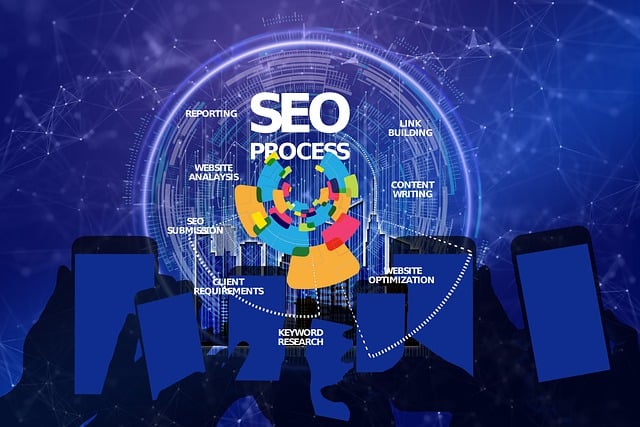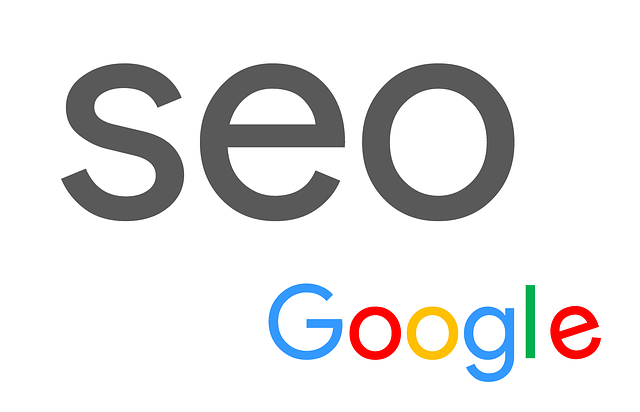In the digital arena, on-page optimization is a cornerstone of successful White-Hat SEO techniques. This ethical approach focuses on enhancing website content and structure without cutting corners. From crafting compelling, high-quality content to strategically placing keywords, each element contributes to search engine visibility.
This article explores key principles, including meta tags’ significance, image optimization through alt text, and the power of strategic headings. Discover how user experience improvements and regular updates play a vital role in mastering on-page White-Hat SEO techniques for optimal search rankings.
Understanding White-Hat SEO: The Ethical Approach

White-Hat SEO refers to a set of ethical practices designed to improve a website’s search engine rankings while adhering to the guidelines and algorithms set forth by search engines, primarily Google. It is called ‘white-hat’ because these techniques are considered honorable and do not employ any deceptive or spammy strategies. The primary goal is to enhance the overall user experience by creating high-quality content, optimizing site structure, and ensuring fast loading speeds.
This approach involves implementing various white-Hat SEO techniques such as keyword research and optimization, writing compelling meta tags, creating valuable and unique content, improving site navigation, and building quality backlinks. These strategies focus on making the website more accessible and attractive to both users and search engine crawlers. By prioritizing user satisfaction, white-hat practices ensure long-term sustainability in search engine rankings.
Key Principles of Implementing Effective On-Page Strategies

The success of On-Page White-Hat SEO lies in adhering to core principles that enhance user experience and search engine accessibility. Key strategies involve optimizing content quality, ensuring keyword relevance, and enhancing structural elements like headings, meta descriptions, and URL structures. High-quality, informative, and keyword-rich content not only satisfies user intent but also signals search engines about the page’s purpose, boosting its authority and visibility.
Implementing effective on-page strategies requires a nuanced approach to technical SEO as well. This includes improving page load speed, enhancing mobile responsiveness, and ensuring proper internal linking. These techniques foster a seamless user journey, encourage longer session durations, and reduce bounce rates—all factors that positively impact search engine rankings through advanced machine learning algorithms that consider user behavior as a significant ranking signal.
Optimizing Content: Quality Over Quantity

When it comes to on-page White-Hat SEO, optimizing content means prioritizing quality over quantity. It’s not about stuffing keywords or creating lengthy articles for the sake of search engine rankings; instead, it’s about crafting valuable, relevant, and engaging content that meets the user’s needs. High-quality content provides in-depth information, answers questions, and offers unique insights that keep readers interested and encourage them to spend more time on the page. This longer engagement signals to search engines that your site is providing a positive user experience, which can improve rankings over time.
White-Hat SEO Techniques focus on creating content that naturally incorporates keywords without appearing keyword-stuffed. This involves using keywords in strategic locations like headings, meta descriptions, and throughout the body text, but always with an emphasis on readability and value. Well-optimized content not only attracts organic traffic from search engines but also fosters trust and credibility with your audience, leading to better user retention and increased time spent on your site.
Keyword Research and Placement Techniques

Keyword research is a cornerstone of effective White-Hat SEO techniques, involving meticulous analysis to identify relevant terms and topics that accurately reflect your content’s focus. This strategic process begins with understanding your target audience and their search intent. Tools like Google Keyword Planner or SEMrush can help uncover popular keywords, search volumes, and competition levels, enabling you to select the most suitable terms for optimization.
Placement techniques, another critical aspect, involve strategically incorporating keywords into essential on-page elements. This includes optimizing titles, headings (H1, H2, etc.), meta descriptions, URL structures, and content itself. The goal is to provide a natural and reader-friendly experience while ensuring search engines can easily understand the context of your page through relevant keyword usage.
Enhancing User Experience for Better SEO Results

Improving user experience is a vital component of successful White-Hat SEO Techniques. By creating websites that are easy to navigate, mobile-friendly, and visually appealing, you encourage visitors to stay longer, explore more pages, and engage with your content. This increased time on site and reduced bounce rate signal to search engines that your website offers valuable information, which can lead to better rankings. User experience also plays a crucial role in earning backlinks and social shares, as satisfied users are more likely to share their positive experiences with others.
Implementing user-centric design principles, such as clear calls-to-action, intuitive navigation, and fast loading times, directly contributes to a positive user experience. Additionally, optimizing for voice search and ensuring your content is high-quality and relevant further enhances your website’s ability to attract and retain visitors. These strategies not only improve SEO results but also create a more enjoyable and rewarding experience for your audience.
The Role of Meta Tags and Descriptions

Meta tags and descriptions play a pivotal role in the arsenal of white-hat SEO techniques. These HTML elements, while often overlooked by users, are crucial for search engine optimization as they provide vital information about a webpage to both search engines and potential visitors. The meta tag acts as a signal to search algorithms, conveying the topic and context of the page, which helps in accurate indexing and ranking.
Crafting effective meta tags involves balancing keyword relevance with readability. A well-optimized meta description not only includes targeted keywords but also entices users to click through to the website, reducing bounce rates and enhancing user engagement—a key factor considered by search engines in determining a page’s quality and value.
Utilizing Headings and Internal Linking Strategically

In the realm of White-Hat SEO Techniques, utilizing headings and internal linking strategically is akin to crafting a well-structured symphony. Headings, like musical notes, provide the framework for your content, guiding both users and search engines alike. H1, H2, and H3 tags not only enhance readability but also signal to algorithms what your page is about. By integrating keywords naturally within these headings, you orchestrate a seamless dance between relevance and user experience.
Internal linking, on the other hand, serves as the connections between the sections of your content symphony. Strategically linking relevant pages within your site allows users to navigate effortlessly while enabling search engines to understand the context and interrelatedness of your topics. This not only bolsters page authority but also keeps visitors engaged, fostering a harmonious experience that resonates with both users and search engine optimizers.
Image Optimization: Alt Text and File Names

Image optimization is a critical component of on-page White-Hat SEO Techniques. One of the key elements is utilizing descriptive and contextually relevant `alt text`. Alt text serves as an alternative description for images, providing search engines with valuable information about what the image represents. This becomes especially crucial when an image fails to load or for visually impaired users relying on screen readers. By including targeted keywords in alt text, you enhance accessibility while also allowing search engine crawlers to index your content more effectively.
Additionally, optimizing image file names is equally important. File names should be descriptive and include relevant keywords, reflecting the content of the image accurately. This practice improves user experience by enabling faster loading times and easier navigation. Moreover, it reinforces the relevance of your content to search engines, thereby boosting your website’s ranking potential through genuine and contextual connections.
Regularly Updating and Refreshing On-Page Elements

